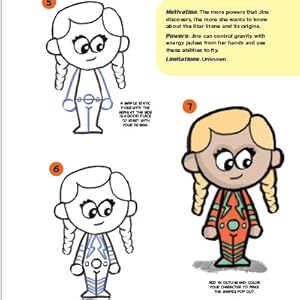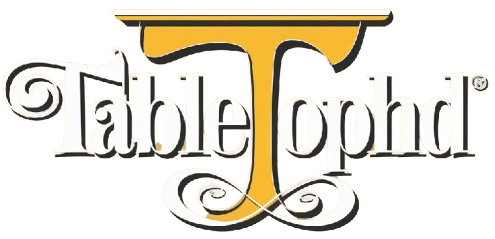Price: $14.86
(as of May 08, 2025 12:06:03 UTC – Details)
Learn to draw comic book characters with fun and easy, step-by-step drawing projects, and then design your own superheroes and villains.
Are you an aspiring cartoonist or comic book artist? Then You Can Draw Comic Book Characters is just for you! Following the simple step-by-step projects in this fun and exciting book, beginning artists—both the young and the young at heart—will learn to draw a range of original heroic and villainous comic characters, each with their own background story and superpower! Tips, techniques, and easy-to-understand instructions for drawing faces, hair, costumes, and poses will help you create your own unique characters in no time. You’ll not only learn how to design characters from scratch, but you’ll also discover how to add dialog and tell a story using panels.
The book opens with helpful sections on tools and materials, essential drawing techniques, and color. This information ensures that you know the basics before getting started on the step-by-step projects that follow. Get to know and draw more than 25 fun characters, including:Jinx Tagget, whose discovery of the Star Stone allows her to control gravity with energy pulses from her hands (and therefore fly!)Tazu the Terror, whose greatest power is not his magical staff, but his ability to accurately predict the actions of his foesMonsclara, a powerful but clumsy alien race from the planet MarumeiBattle Model KR-E2, fully sentient robots that want to wake up other KR robotsAlleyne, the smallest person from a planet full of giants, who accidentally ended up on Earth after being zapped through a warp tunnelCordy Seacliff, child genius, who created a jet-pack inspired by the old sci-fi movies he lovesBabsti, professor and expert Egyptologist who discovered the secrets the cat goddess Bastet, whose powers she is now able to yieldThe Vortexer, an anti-hero consumed by jealousy who wears a technologically enhanced super suit with wrist-mounted vortex cannonsAnd many more!Throughout the book, in between the drawing projects, are closer looks at how to create a complete comic book, including developing interesting heroes and villains, writing a story, adding dialog, and using panels. And included at the end of the book are templates to scan or photocopy and practice on over and over again. Drawing a character standing, running, flying, or zapping is easy with the included tips, techniques, and templates.
Cleverly written and beautifully illustrated by professional artist Spencer Brinkerhoff III, You Can Draw Comic Book Characters is the perfect introduction to comic book character illustration for cartoon artists-in-training!
From the Publisher


Hi, comic book fans!
My name is Spencer, and making art and teaching art are two of my absolute favorite things! I’ve been drawing since elementary school, and I’ve even completed a university degree in art. Through my experiences, I’ve learned how to draw in many different styles and with many different tools, but you don’t need a degree in art or a lot of art supplies to draw! One day, my 5-year-old son told me how frustrated he was with trying to draw. I told him that drawing is simple. The key is to be able to see the simple shapes that are hidden within the complex shapes. This book shows you how to draw by beginning with simple shapes. Then, with my easy-to-follow, step-by-step instructions and helpful notes, you can add the details to finish a comic book character. There’s even information throughout this book on making your own characters and comic books! If you want a simple, approachable, and creative way to improve on your drawing skills, then you’ve picked up the right book!


Drawing Basics
Absolutely everyone can draw! The easiest characters in this book are the forward-facing characters. To begin, you will draw just a few guidelines so you know where to place the major features of your character, including the head, eyes, body, and feet.


Creating a Hero
Comic book heroes, like Jinx Tagget, usually start out as normal, everyday people just like the rest of us, but there’s something different, something special about them. We look up to heroes and want to see ourselves in them. We imagine that we too have that special quality. Once they see the damage a villain has done, heroes are willing to sacrifice their own desires, their own needs, or even their own safety for the greater good. More than anything else, the heroes are willing to change. They grow and transform through their choices.


Comic! Creating a Villain
When creating your own cast of characters for a comic book, start with the villain. While the hero is the superstar of the story, remember that without a villain, there would be nothing for your hero to fight against! Starting with the villain helps to create the world that your hero lives in. This character will introduce elements of conflict that your hero has to overcome and will provide a driving force for your hero’s actions.


Developing a Story
Simply put, all stories have a beginning (first act), middle (second act), and an end (third act). Before you start drawing a comic book, first write a script of what’s going to happen in the story. While telling the story, remember that the absence of information will better draw in your audience. Instead of saying everything up front, let your characters’ backstories, goals, motivations, powers, and limitations reveal themselves slowly through their actions


Using Panels
There’s more to comic book panels than simply dividing up your page into smaller boxes. The size, shape, and direction of the panels will help tell your story.


Adding Dialog
Now that your thumbnail sketches are complete and your panels laid out, add the dialog! Dialog boxes and balloons show conversations between characters, thoughts, shouts, whispers, sound effects, and narration about the scene or situation that the character is in.


Putting It All Together
Comic books are a visual form of storytelling. The pictures and words on each page are divided into panels to create action, drama, pacing, and an overall tone for the story. There’s a fine balance between the visuals and the written word, but the key to a successful comic is the story that’s being told. Keep this in mind when you’re putting all the elements together to create your comic book.
Publisher : Walter Foster Jr. (August 18, 2020)
Language : English
Paperback : 96 pages
ISBN-10 : 1633228665
ISBN-13 : 978-1633228665
Reading age : 6 – 8 years
Lexile measure : IG920L
Grade level : 1 – 3
Item Weight : 2.31 pounds
Dimensions : 8.55 x 0.4 x 11 inches









Reviews
There are no reviews yet.